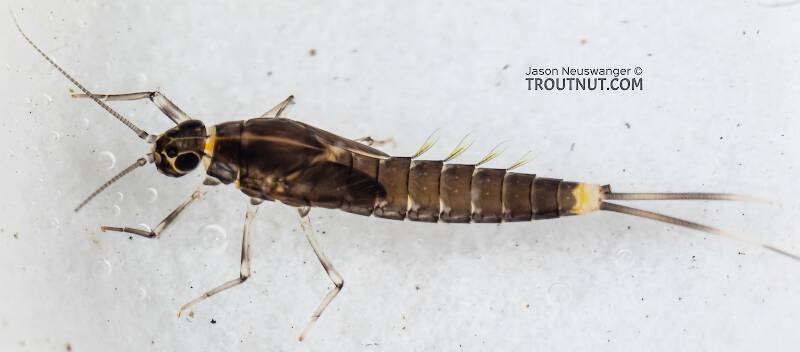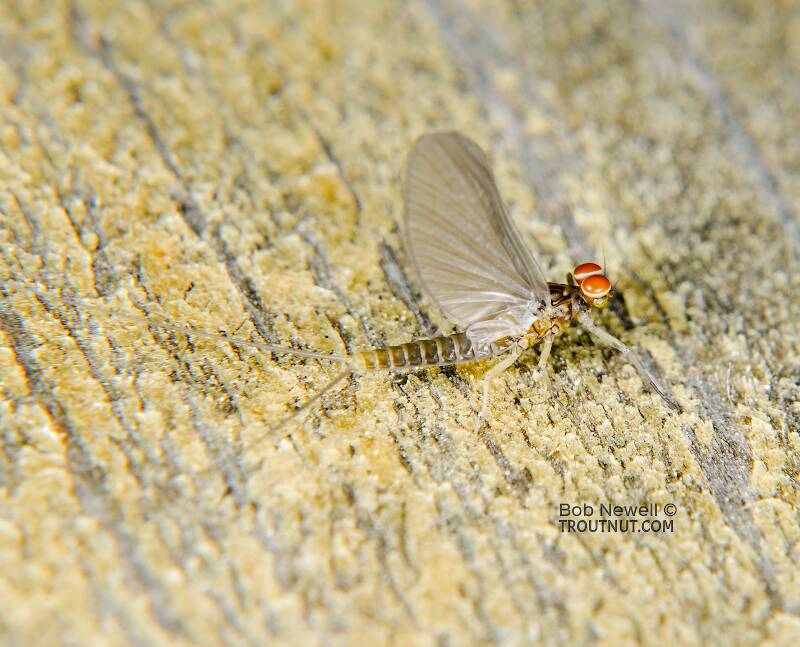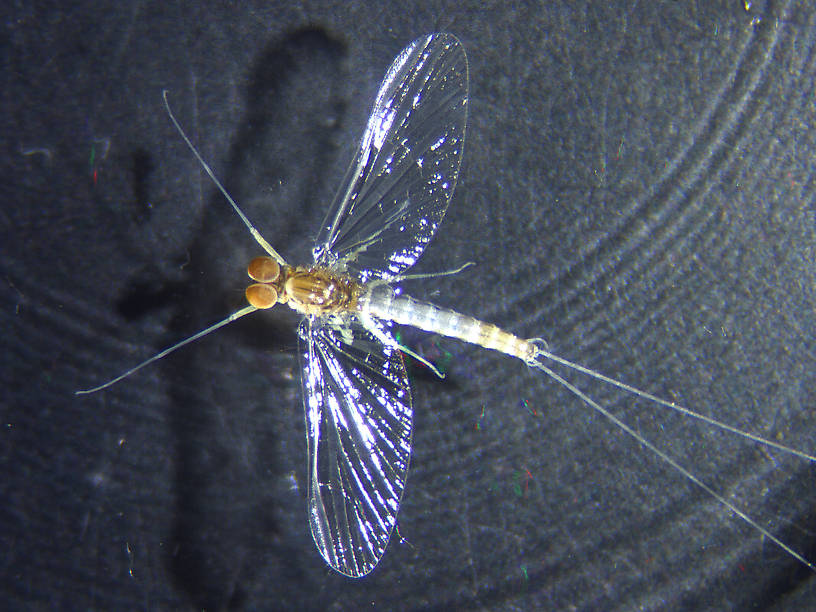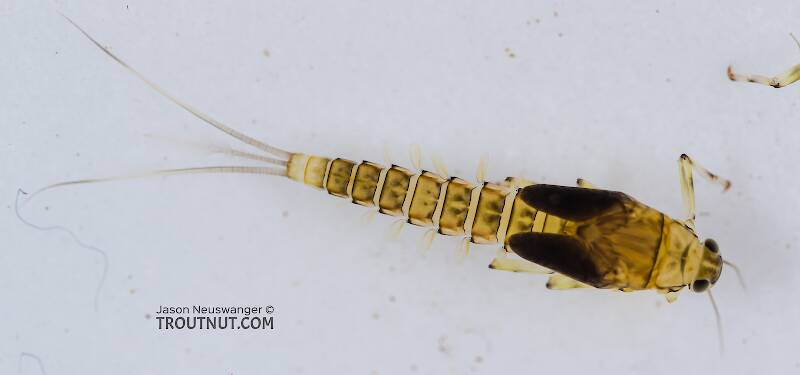
Blue-winged Olives
Baetis
Tiny Baetis mayflies are perhaps the most commonly encountered and imitated by anglers on all American trout streams due to their great abundance, widespread distribution, and trout-friendly emergence habits.
Featured on the forum

This seems to be a young larva of Limnephilus. Although not clear in the picture, several ventral abdominal segments have chloride epithelia.

Troutnut is a project started in 2003 by salmonid ecologist Jason "Troutnut" Neuswanger to help anglers and
fly tyers unabashedly embrace the entomological side of the sport. Learn more about Troutnut or
support the project for an enhanced experience here.
Iron Blue Quills
Like most common names,"Iron Blue Quill" can refer to more than one taxon. They're previewed below, along with 5 specimens. For more detail click through to the scientific names.
Mayfly Species Diphetor hageni
These are often called Iron Blue Quills.
This is one of the most important species of the Baetidae family. It is distributed across the country but most of its fame comes from excellent hatches in the West. Prior to many other former species being combined with Baetis tricaudatus, most angling literature considered it the most populous and widespread western species of the Baetidae family.
Mayfly Species Baetis magnus
These are often called Iron Blue Quills.
This large western baetid is in the Rhodani group of closely related species that could probaly also be called the Baetis tricaudatus species complex. Besides its large overall size, large hind wings (for a baetid) with rounded margins and dark lateral bands of pigment on the abdomen are are also characteristic.
Mayfly Species Labiobaetis propinquus
These are sometimes called Iron Blue Quills.
This species was previously known as Baetis propinquus, a name from older nomenclatures and angling literature familiar to many western anglers. Prior to its current listing, it did a brief stint in the genus Pseudocloeon. The irony is that though this species has hind wings, it was the last species remaining in Pseudocloeon (before the genus recent Nearctic taxonomic demise) which was best known for its species lacking hind wings as an identifying character.
Though it has a national distribution its most important hatches occur in the West, usually hatching between the larger broods of Baetis tricaudatus. Western anglers experiencing a hatch can easily confuse them with the larger Baetis bicaudatus as both nymphs appear similar with only two tails. Besides size, the adults can be separated from bicaudatus (with the help of a little magnification) because L. propinquus lacks acute costal projections on its tiny hind wings. Conversely, the presence of hind wings and lack of conical mesonotal projections makes them easy to tell from the more common and equally tiny Acentrella turbida.
Though it has a national distribution its most important hatches occur in the West, usually hatching between the larger broods of Baetis tricaudatus. Western anglers experiencing a hatch can easily confuse them with the larger Baetis bicaudatus as both nymphs appear similar with only two tails. Besides size, the adults can be separated from bicaudatus (with the help of a little magnification) because L. propinquus lacks acute costal projections on its tiny hind wings. Conversely, the presence of hind wings and lack of conical mesonotal projections makes them easy to tell from the more common and equally tiny Acentrella turbida.
Mayfly Species Baetis tricaudatus
These are sometimes called Iron Blue Quills.
Baetis tricaudatus is undeniably the most widespread and abundant baetid on the continent and arguably the most important mayfly species to trout and anglers alike. Eastern anglers used to know these important mayflies by the storied name of Baetis vagans. Conversely, the usually much larger and late Fall hatching brood of Baetis tricaudatus was considered an important Western species with its own tradition. But, entomologists recently determined that they are both in fact the same species. The nomenclature conventions guiding entomologists do not account for a name's regional fame among fishermen, and new or obscure species names may replace their old favorites. Sometimes taxa with disparate traditions are combined. Baetis vagans is one such casualty. Fortunately, trout think like Shakespeare: A rose by any other name would smell as sweet. The rose that was vagans has lost none of its charm. This species is multibrooded with the hatches of Spring being larger flies. As the weather warms the following broods are composed of progressively smaller flies. In the East, they range in size from 16 to 20. In the West, they may run a size larger.
See 10 more specimens...
Mayfly Species Neoleptophlebia mollis
These are very rarely called Iron Blue Quills.
This species often emerges together with Paraleptophlebia strigula and Paraleptophlebia guttata, and the combined effect can be a good fishable hatch. The latter two are much less famous than mollis, but Knopp and Cormier say they are more reliable.
References
- Knopp, Malcolm and Robert Cormier. 1997. Mayflies: An Angler's Study of Trout Water Ephemeroptera . The Lyons Press.






